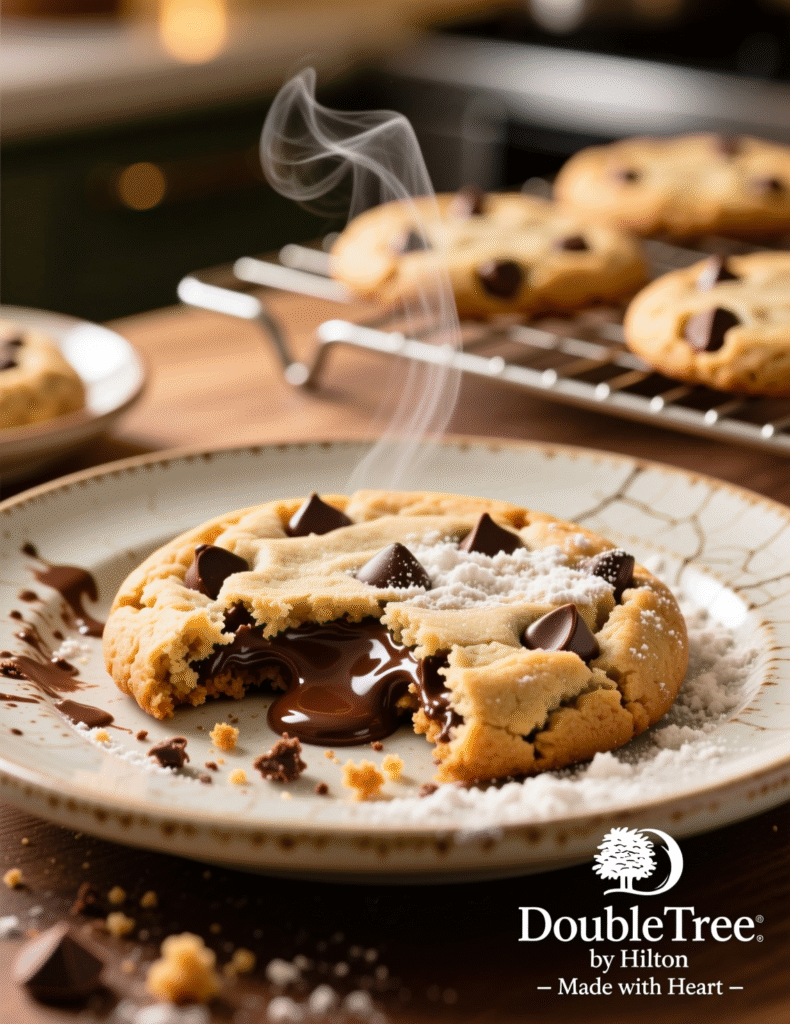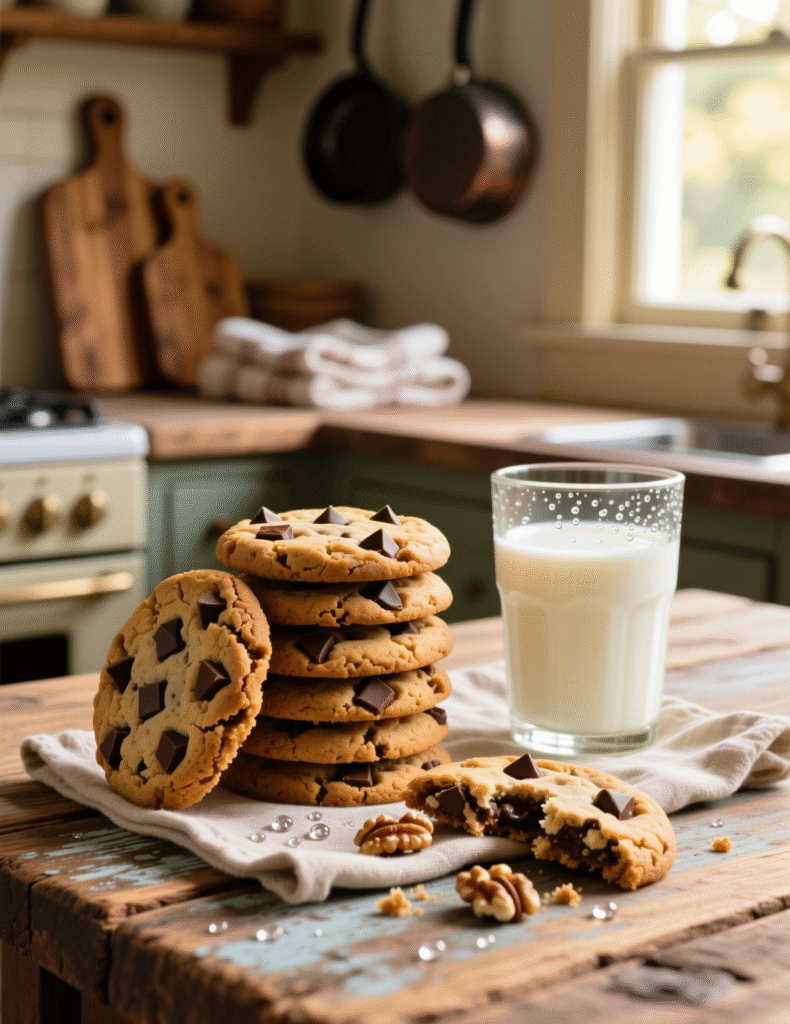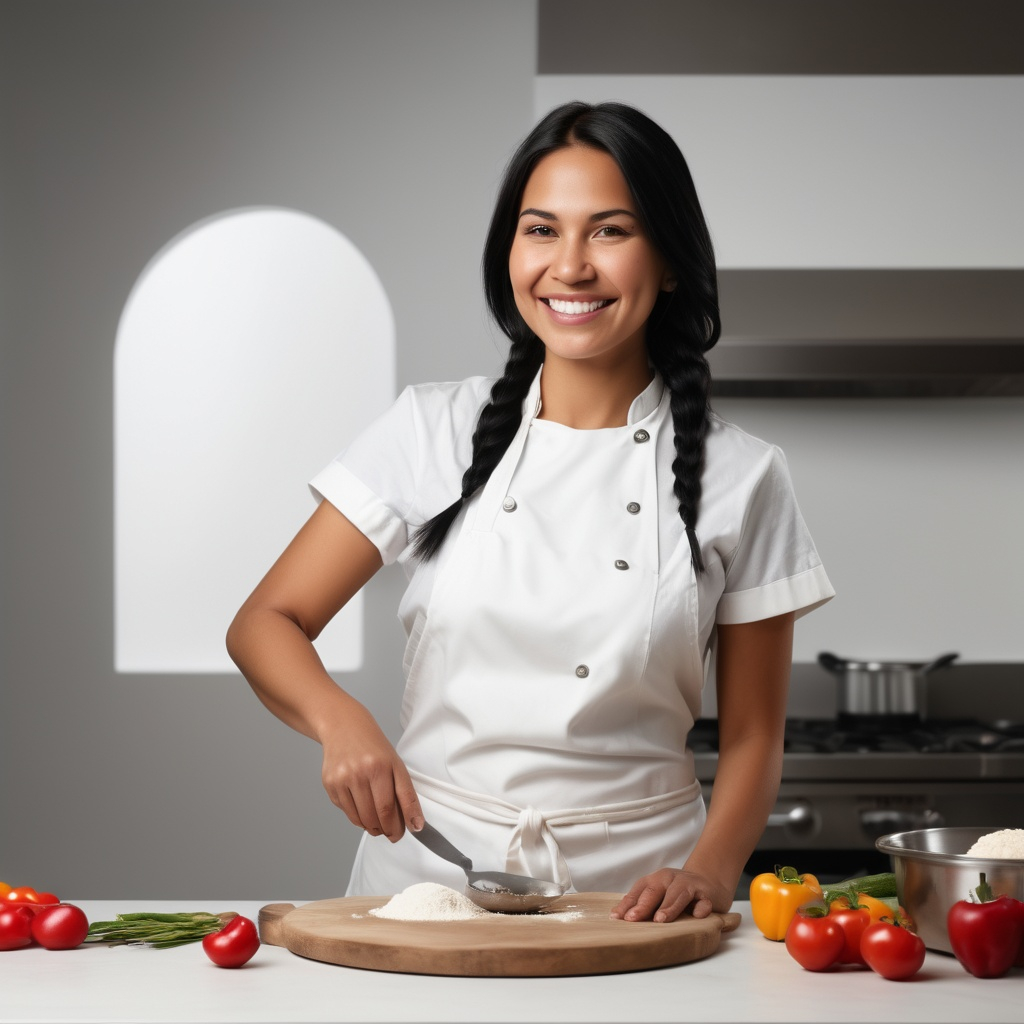There’s a kind of cookie that doesn’t just taste good—it feels like a hug. You know the one. That warm, gooey, melt-in-your-mouth chocolate chip cookie you get when checking into a DoubleTree hotel. The scent hits before you even get to your room, wrapping you up in butter, brown sugar, and nostalgia. Well, guess what? You can make those exact cookies at home, and I’ll show you how to do it right—the pro way.
These aren’t your regular old cookies. They’ve got layers—literally and figuratively. A balance of crisp edges, soft centers, melty chocolate, and just the right chew. The secret’s in the ingredients, the ratios, and even the baking technique. Let’s dive deep, like, baker’s-notebook deep.
The Story Behind the Cookie
DoubleTree by Hilton didn’t just stumble onto this recipe. Since the 1980s, these cookies have been a brand signature, baked fresh daily in hotels around the world. For decades, the exact recipe was a corporate secret—until 2020, when Hilton finally released it to the public. Why? The pandemic had everyone baking, and DoubleTree decided to share a little comfort.
But here’s the thing—most “copycat” versions floating around the web miss subtle but critical technical details. We’re talking about temperature, butter ratios, and even the type of oats used. This isn’t just about mixing and baking—it’s about replicating a texture balance engineered to perfection.
Ingredients – The Building Blocks of Cookie Magic
Before we bake, let’s understand what each ingredient really does. That’s what separates home bakers from pastry professionals.
- 1 cup butter (2 sticks), softened but not melted. The fat base that provides richness and structure. The softened state helps cream air into the dough for lightness.
- ¾ cup + 1 tablespoon granulated sugar. Sweetness, yes—but also caramelization and browning.
- ¾ cup packed light brown sugar. Adds depth and that chewy interior from molasses content.
- 2 large eggs. The glue. Eggs bind the dough and give moisture. Room temperature eggs = even texture.
- 1¼ teaspoons vanilla extract + ¼ teaspoon lemon juice. That tiny lemon touch? Balances sweetness and enhances flavor—many skip it. Don’t.
- 2¼ cups all-purpose flour. The backbone. Overmix it and you’ll get dense cookies.
- ½ cup rolled oats. The secret texture booster. Adds chew and body without tasting like oatmeal cookies.
- 1 teaspoon baking soda + 1 teaspoon salt. Baking soda for lift, salt for flavor contrast.
- A pinch of cinnamon. Yep, cinnamon. That subtle warmth is part of what makes these cookies addictive.
- 2⅔ cups semi-sweet chocolate chips. The soul. Use quality chocolate. Bad chips ruin everything.
- 1¾ cups chopped walnuts (optional). Optional, yes, but traditional. Adds nutty balance and a soft crunch.
Professional tip? Weigh your ingredients. Cup measures are fine for grandma’s kitchen, but precision baking needs grams.

The Art of Mixing – Don’t Just Dump and Stir
Creaming the butter and sugars isn’t just about mixing—it’s about incorporating air. That’s what gives the cookies their lift. You’ll want to cream for about 2 to 3 minutes, just until the color lightens slightly. Too much and you’ll whip too much air—leading to flat cookies.
When adding eggs, do it one at a time. Let each one fully mix in before adding the next. It stabilizes the emulsion. If the dough curdles, you probably rushed it or the butter was too cold. A tablespoon of flour can rescue that.
Then comes the dry mix. Always whisk flour, baking soda, salt, cinnamon, and oats separately. When you add them to the wet ingredients, go slow. Mix on low until just combined. Overmixing activates gluten, and nobody wants bready cookies.
The Science Behind the Perfect Cookie Texture
Here’s something most people don’t realize—the difference between good and unforgettable cookies is thermal control.
Refrigerate your dough for at least 4 hours. Ideally overnight. Why?
- The flour hydrates properly, deepening flavor.
- The fat solidifies, so cookies spread slower when baking.
- The sugar crystallizes slightly, giving that crisp edge.
Professional pastry chefs know that rest time changes everything. Even a 30-minute chill helps, but 12 hours? That’s the real game.
Baking – Precision Meets Patience
Preheat your oven to 300°F (150°C). That’s lower than most cookie recipes, and it’s deliberate. DoubleTree cookies bake slow—that’s how they get that golden brown exterior and soft, warm middle.
Use parchment-lined sheets. Scoop dough balls of roughly 3 tablespoons each. Leave about 2 inches between cookies—they’ll spread gently but evenly.
Bake for 20 to 23 minutes, until the edges are set and the centers still look slightly underbaked. Trust the underbake. They’ll finish cooking on the sheet. Pull them out, let them sit for a full hour before storing—or devouring.
Here’s a fun trick: if you want to re-create that “hotel smell,” bake a small test cookie before guests arrive. The aroma of butter and chocolate in a 300°F oven is practically marketing genius.
Professional Troubleshooting – Common Cookie Flaws
Even skilled bakers sometimes get surprises. Let’s troubleshoot like pros.
- Cookies spread too much: Dough too warm. Chill longer, or reduce butter by a tablespoon next batch.
- Dry or cakey: Overmixed flour or too little sugar. Sugar locks in moisture—don’t skimp.
- Too crispy: Oven too hot or baked too long. Every oven lies—get an oven thermometer.
- Chocolate melting oddly: Poor-quality chips. Use real chocolate with cocoa butter, not compound coatings.
Baking, at its heart, is chemistry wearing an apron.

Why These Cookies Feel So Different
Ever noticed how DoubleTree cookies feel heavier in the hand? That’s intentional. Each weighs about 2 ounces. They’re designed to have substance—to feel indulgent.
The oats add invisible architecture. The brown sugar adds chew. The cinnamon whispers warmth. And that lemon juice? It brightens the whole flavor profile, like adjusting white balance on a photo. Subtle, but transformative.
There’s a reason why even chefs grab a DoubleTree cookie with a coffee after service. It’s not just nostalgia—it’s balance. Every element complements the other.
The Texture Spectrum – Crispy, Chewy, Soft
Professional bakers talk about “crumb structure” like sommeliers talk about tannins. DoubleTree cookies hit the golden middle.
The edges caramelize because of the sugar ratio. The middle stays soft because of fat-to-flour balance. Oats add micro-chew. If you break one open warm, the chocolate should string a little but not ooze—it’s that perfect molten hold.
Ingredient Deep Dive: Why Each One Matters
Let’s nerd out a bit.
Butter: European-style butter (with 82%+ fat) produces richer cookies. American butters often have more water. If you use salted butter, skip half the added salt.
Sugar: Granulated sugar promotes spread; brown sugar promotes chew. The 1:1 ratio here is intentional—it creates that harmony of crisp and chew.
Oats: Finely ground oats (not instant) subtly bind moisture. It’s an old pastry trick to prevent over-softness.
Eggs: Size matters. Always large eggs, never extra-large, or the dough will be too loose.
Chocolate: Professional kitchens often use couverture chocolate for smoother melt. If you can, chop a bar instead of chips—it changes mouthfeel entirely.
Serving Like a Pro
Serve warm. Always. To recreate that just-baked experience, microwave for 10–12 seconds. The chocolate will soften, the butter aroma blooms again, and you’ll remember why people check into hotels they could’ve skipped.
Pair with black coffee for contrast or a cold glass of milk for comfort. Some pastry chefs even crumble them into ice cream bases—luxury cookie dough, literally.
Storage and Shelf Life
At room temperature, these cookies stay fresh for up to 5 days in an airtight container. For longer storage, freeze the dough balls (unbaked) and bake them fresh when needed. Frozen dough keeps up to 3 months. Bake straight from frozen—just add 2 extra minutes.
DoubleTree hotels freeze and bake on demand, which is why guests always get that “fresh from the oven” smell. You can do the same.
A Quick Nutritional Note
Each cookie clocks in around 310–350 calories, depending on chocolate and nuts. Yeah, they’re indulgent—but that’s the point. These aren’t diet cookies. They’re experience cookies.
As pastry chef Christina Tosi once said, “Cookies are joy you can hold.” This recipe embodies that philosophy perfectly.
Expert Tips to Elevate Even More
- Toast your walnuts before adding. It deepens flavor tenfold.
- Sprinkle a pinch of flaky sea salt on top before baking for gourmet contrast.
- Use dark brown sugar for deeper molasses notes.
- Add a teaspoon of espresso powder to the dry mix—it enhances chocolate flavor subtly.
- Rest the dough balls uncovered in the fridge for an hour before wrapping; this helps create a slightly crispier crust when baked.
Small tweaks, big difference.
The Experience Beyond the Cookie
Let’s be real—it’s not just the flavor. It’s the ritual. You bake these on a rainy Sunday, maybe late at night. The kitchen smells like warmth and butter. You break one open, and the chocolate stretches like silk. That’s not just baking. That’s emotion baked into chemistry.
Hotels figured it out: smell + comfort = loyalty. But for you? It’s about mastery—understanding how to control temperature, texture, and timing so your cookies don’t just look like DoubleTree’s—they feel like them.
FAQs
What makes DoubleTree Chocolate Chip Cookies different from regular cookies?
They use oats, a hint of lemon juice, and cinnamon, creating a chewy texture and balanced flavor.
Why should I chill the dough before baking?
Chilling solidifies the butter, prevents spreading, and deepens the cookie’s flavor.
Can I skip the lemon juice in the recipe?
You can, but it subtly enhances sweetness and adds brightness—better to keep it.
What kind of oats should I use?
Use rolled oats, not instant or steel-cut, for the perfect chewy bite.
Can I use salted butter instead of unsalted?
Yes, but reduce the added salt by half to keep flavor balance.
How do I make my cookies soft and chewy like DoubleTree’s?
Bake at 300°F and pull them out when the centers still look slightly underdone.
How long can I store the cookies?
They last about 5 days in an airtight container or 3 months if frozen.
Can I freeze the cookie dough?
Absolutely—freeze the dough balls and bake directly from frozen when needed.
Why is the oven temperature lower than most cookie recipes?
A slower bake at 300°F creates a soft center and perfectly browned edges.
Are walnuts necessary for the recipe?
No, but they add a lovely crunch and nutty flavor that complements the chocolate.
Can I use dark chocolate instead of semi-sweet chips?
Yes, dark chocolate adds a bolder, richer flavor profile.
Why does my cookie dough look curdled after adding eggs?
Your butter was likely too cold; add a tablespoon of flour to fix the texture.
What gives DoubleTree cookies their signature aroma?
The combination of butter, brown sugar, and slow baking at low heat.
How many calories are in each cookie?
Roughly 310–350 calories per cookie, depending on chocolate and nut quantity.
Can I make smaller cookies with this recipe?
Yes, just reduce baking time by 4–5 minutes for smaller portions.
Why do my cookies turn out flat?
Your dough was too warm or over-creamed—chill it longer before baking.
What’s the best way to reheat these cookies?
Microwave for 10–12 seconds to bring back that warm, gooey texture.
Can I make this recipe without eggs?
You can try flaxseed or applesauce substitutes, but texture may change slightly.
What’s the purpose of the cinnamon in this recipe?
It adds subtle warmth that enhances the cookie’s chocolate and nut flavors.
How many cookies does this recipe make?
It yields about 12 large, indulgent cookies—just like the hotel ones.
Conclusion
The DoubleTree Chocolate Chip Cookie is more than a hotel gimmick—it’s a masterclass in controlled decadence. Every gram, every temperature, every rest time serves a purpose. The balance between crisp, soft, chewy, and rich isn’t an accident—it’s science and soul working together.
If you follow this recipe as written—respecting the rest, the butter temp, the bake time—you won’t just copy DoubleTree’s cookies. You’ll understand them. You’ll taste the architecture behind them.
And honestly? Once you’ve baked a batch that fills your kitchen with that buttery hotel aroma—you’ll realize something strange. You’re not chasing the DoubleTree cookie anymore. You’ve made something even better.
Estimated Prep Time: 15 minutes
Chill Time: 4+ hours (overnight ideal)
Bake Time: 22 minutes
Yield: 12 large, indulgent cookies

Marie Smith is a passionate recipe blogger, sharing easy, delicious, and creative culinary ideas that inspire home cooks to elevate everyday meals with flavor and simplicity.
